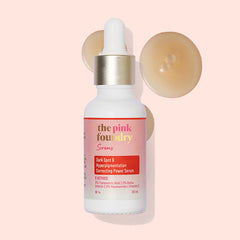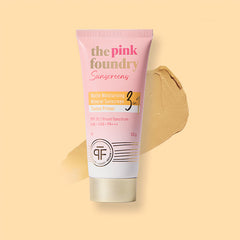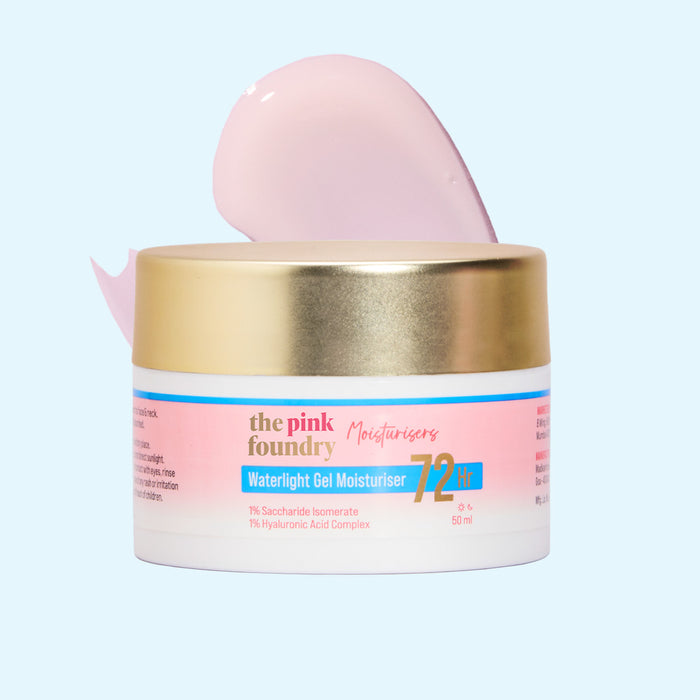Is waxing good for skin: The pros and cons of face waxing
Body hair is an essential part of human anatomy. While some people feel comfortable keeping it, others may prefer to remove it. Often, removing facial hair is considered a part of personal grooming. To others, keeping it might feel empowering, too! Both are valid, but what matters most is knowing how to remove your hair safely if you choose to do so! There are several ways to go about it. From shaving and lasering to waxing, you name it!
While shaving is quite common and lasering quite intensive, waxing seems more intermediate. But this begs the question, is waxing good for the skin? That's precisely what this article is set to find!
What is face waxing?
Let's start by diving into what waxing does! This is one of the most popular ways of removing body hair. It works by pulling outgrown hair from the roots through the power of adhesion. You'll see your parlour aestheticians spread a type of quick-drying, sticky substance on the part of your body before using a quick pull to uproot your hair! This is a temporary form of hair removal that lasts longer than shaving. This is because it pulls from the roots rather than cutting the hair short. New hair takes about 2 weeks to a month to start growing back. However, uprooting your hair enough times can damage your follicles, resulting in less growth over time.
Is waxing good for face skin?
Now that we know how waxing works, let's get to the heart of the debate. Is face wax good for skin? Should you use it? If so, how?
Well, the answer is nuanced. For starters, there are different types of waxes with varied textures that are used on different parts of the body. The wax you use on your calf may not be the best on your skin. This is because your face skin is thinner than the skin on the rest of your body! That means it is more prone to abrasion and damage!
Soft wax works best for peach fuzzes on the cheeks and upper lip hair. This wax has a sifter texture that does not tug harshly on the skin. Chocolate wax, made from cocoa extract, also works great for facial hair for people with sensitive skin!
On the contrary, hard wax and sugar wax with lemon or fruit wax may not suit people prone to dermatitis, allergies or acne. Fragrances and thicker textures can aggravate these conditions and cause irritations.
So, let's answer the question. Is face waxing good for your face? In essence, people wax all the time! It's just important to know the ingredients of your wax and use one that fits your skin type!
How to care for skin after waxing
So now you've started waxing your face. But how do you care for your skin after? Post-waxing skin care can do wonders to help you get used to waxing! Here are the rules:
1. Use an oil cleanser to remove any wax.
Your skin must be dry for the wax to adhere to your hair. That means, post waxing, you might be feeling a little dry and sticky! Use an oil cleanser to remove any wax pieces on your skin before jumping into the shower!
2. Do not exfoliate!
It might feel tempting, but don't use physical or chemical exfoliants on freshly waxed skin! This can cause severe inflammation and even bleeding if your skin is sensitive. Using a gentle wash is your best bet!
3. Moisturise your skin after you wax
Once you've cleansed your face, give it some love with a hydrating moisturiser! Pink Foundry's Waterlight Gel Moisturiser 72 Hour Hydration works great for restoring the water content in your skin without feeling tacky! Let's be hornets; after waxing, the last thing you wanna feel is sticky!
4. SPF is your best friend
Your skin is especially sensitive after waxing. Tugging and pulling can make it quite photosensitive, and using an SPF to prevent skin cancer is crucial. Pink Foundry's Dewy Hydrating Hybrid Sunscreen SPF 50+ can help defend you against UVA and UVB rays and prevent skin irritation!
Also read: What Is SPF in Sunscreen?
Benefits of face waxing
Now that we know how to take care of our skin after waxing let's look at some of the benefits it brings to the skin:
1. It's quick and efficient.
Waxing gets rid of hair quickly without extra hassle. It's long-lasting without being invasive!
2. It removes dead skin.
That's right! Waxing can effectively remove dead skin from your face! This improves your skin texture and exfoliates!
3. It slows down hair growth.
When you uproot the hair, the follicles must completely regenerate before it is able to grow again. Depending on the person and the number of times you've waxed the same place, it can take from 3 weeks to a month!
4. It's a smoother finish.
Waxing uproots the hair instead of cutting it short. This means there's no remaining stubble or prickly feeling after a few days from the sharpened hair edges!
Drawbacks of face waxing
As common as it might be, waxing is not without its side effects. Let's look at the most common ones so you can decide if it's for you!
- It's super painful.
- It can irritate your skin and cause inflammation.
- If you have acne or dermatitis, it can cause your skin to rip and bleed.
- It is known to cause ingrown hairs.
Conclusion
Some people love their body hair, and others don't. Both are valid, and you should have the freedom to choose for yourself! After all, real beauty is when you feel healthy in your skin and your choices!
Also read: Pimples after waxing your face: Causes, treatment, prevention
FAQs:
1. Is waxing painful?
Yes. Unfortunately, experiencing pain while waxing is inevitable.
2. Can teenagers wax their faces?
Yes, they can. However, they should be guided by their guardians as it can be abrasive on their developing skin.
3. What is the difference between hard and soft wax?
Soft wax is thinner in texture and less abrasive, while hard wax is thicker and stiffer.
4. What should you do after waxing?
It's best to use an oil cleanser and then moisturise your face.
5. Can you use SPF after waxing?
Yes. It's advisable to use SPF after waxing.










